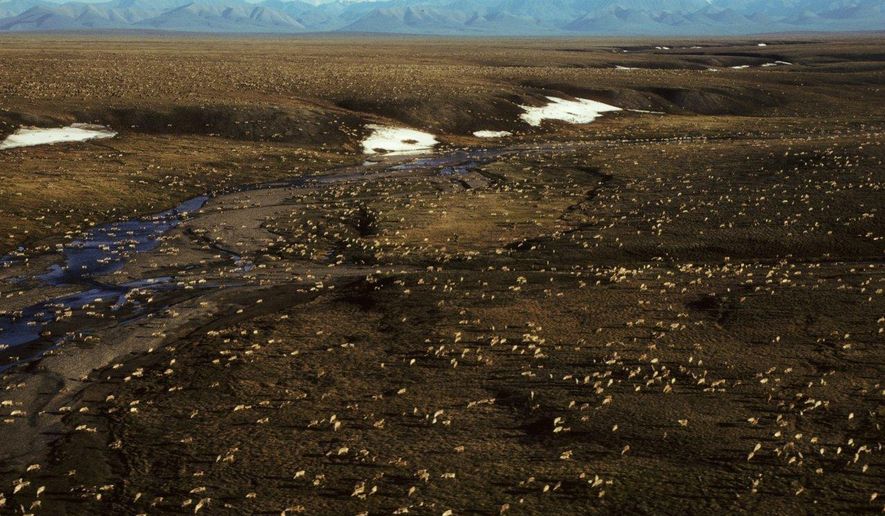To balance his budget in the next 10 years, President Trump wants to sell off half of the nation’s petroleum reserves, open up sensitive areas of Alaska to drilling and end federal programs that direct oil revenue to Gulf restoration projects.
Those cuts — along with broader budget reductions at the EPA, Energy Department and various federal agencies conducting scientific and climate research — would mark a significant shift in the federal government’s approach to energy exploration and security, and in Washington’s willingness to share revenues with state partners.
The energy realm is just one area the administration singled out in its fiscal year 2018 spending proposal. Programs at the Justice Department and Labor Department, Community Development Block Grants, literacy projects and other initiatives also would lose all funding under the proposed budget.
On energy, officials say the massive cuts, while difficult to identify, are consistent with the administration’s broader goals.
“The president’s budget prioritizes America’s energy independence through all of the above — that’s oil, coal, gas and renewable energy — and development in a responsible way, and being accountable for our nation’s land and waters,” Interior Secretary Ryan Zinke told reporters on a conference call.
The Interior Department would see a 10 percent budget cut under the proposal, dropping from about $13.2 billion this year to $11.7 billion in 2018.
The administration’s proposal also calls for the opening of the Arctic National Wildlife Refuge to oil drilling. By 2027, that will have brought in about $1.8 billion, the White House says.
In addition, the administration wants to repeal state payments under the Gulf of Mexico Energy Security Act. That legislation, signed into a law a year after Hurricane Katrina battered the region, shared federal revenue from offshore drilling with Alabama, Texas, Mississippi and Louisiana.
Ending those state payments would save $272 million in 2018 alone, the administration says, and $3.6 billion over the next decade.
The administration also says it could bring in $500 million in 2018 from selling half of the nation’s Strategic Petrleoum Reserve. The stockpile of nearly 700 million barrels of oil is kept in the event of a major accident, natural disaster or other incident that could imperil the nation’s fuel supply.
Over the next decade, the administration says cutting the reserve would bring in about $16 billion.
The oil industry, which has been largely supportive of the president’s efforts on the energy front, was muted Tuesday on the petroleum reserve.
“The Strategic Petroleum Reserve is a tactical energy and national security asset meant to help the American people in a crisis. U.S. energy production from shale formations has effectively created a buffer against global supply disruptions,” said Erik Milito, upstream director at the American Petroleum Institute.
In addition, the administration wants a 5 percent budget cut at the Energy Department and a whopping 31 percent drop in the EPA’s budget. Democrats pounced on those cuts, the proposed drilling in Alaska and other pieces of the plan.
“The Trump budget represents a full-scale retreat from American leadership in the global clean energy race,” said Sen. Edward Markey, Massachusetts Democrat. “And this budget calls for turning over public lands that belong to all Americans … to big oil.”
Outside of the energy cuts, the plan also saves $210 million by ending the Justice Department’s State Criminal Alien Assistance Program that provides federal payments to states and local government to cover the cost of jailing illegal immigrants.
Another $82 million is saved by eliminating the Labor Department’s Migrant and Seasonal Farmworker Training. The program funds “community-based organizations and public agencies to assist migrant and seasonal farmworkers and their dependents attain greater economic stability,” according to the department.
Mr. Trump proposes saving $2.9 billion by doing away with the popular Community Development Block Grants, a flexible program that provides funds for communities to build affordable housing, repair dilapidated homes in poor neighborhoods or provide enrichment activities for poor children.
The grants have fans on both sides of the aisle, but critics say the program is rife with fraud and abuse.
The budget zeros-out the National Oceanic and Atmospheric Administration Grants and Education program, saving $262 million over 10 years.
The Department of Education loses nine grant programs totaling $4.9 billion in cuts. The programs on the chopping block include: Comprehensive Literacy Development Grants, the Strengthening Institutions Program and Teacher Quality Partnership.
• Ben Wolfgang can be reached at bwolfgang@washingtontimes.com.




Please read our comment policy before commenting.